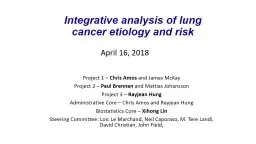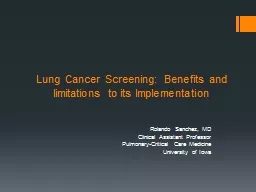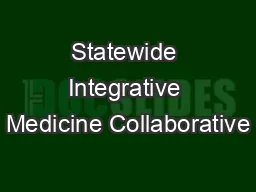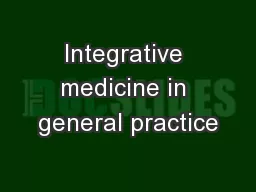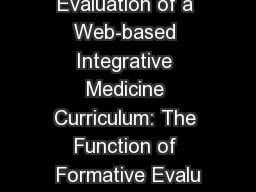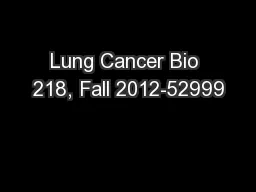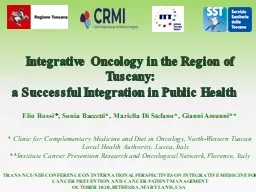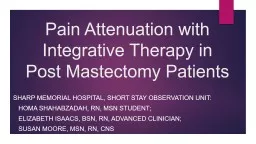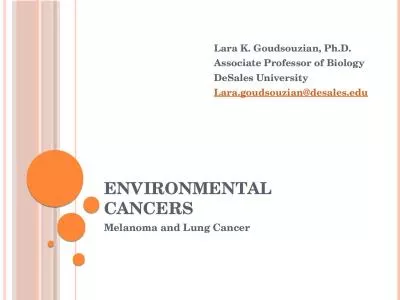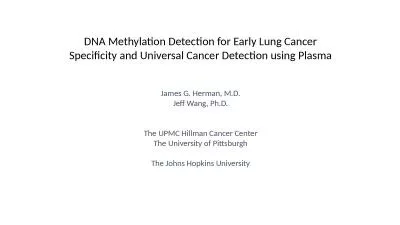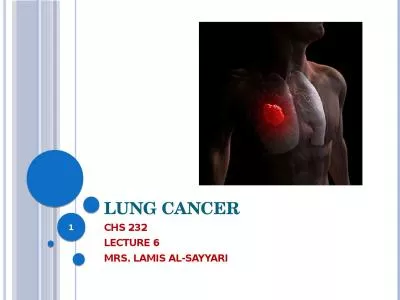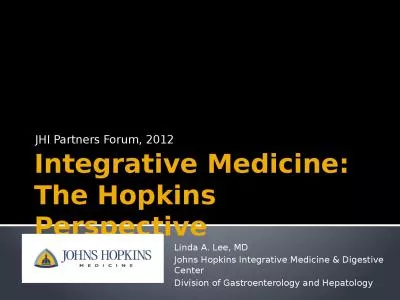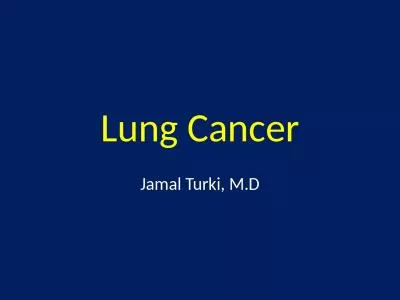PPT-Integrative analysis of lung cancer etiology and risk
Author : gristlydell | Published Date : 2020-06-17
Project 1 Chris Amos and James McKay Project 2 Paul Brennan and Mattias Johansson Project 3 Rayjean Hung Administrative Core Chris Amos and Rayjean Hung Biostatistics
Presentation Embed Code
Download Presentation
Download Presentation The PPT/PDF document "Integrative analysis of lung cancer etio..." is the property of its rightful owner. Permission is granted to download and print the materials on this website for personal, non-commercial use only, and to display it on your personal computer provided you do not modify the materials and that you retain all copyright notices contained in the materials. By downloading content from our website, you accept the terms of this agreement.
Integrative analysis of lung cancer etiology and risk: Transcript
Download Rules Of Document
"Integrative analysis of lung cancer etiology and risk"The content belongs to its owner. You may download and print it for personal use, without modification, and keep all copyright notices. By downloading, you agree to these terms.
Related Documents

